15 Most Famous Paintings of all Time
One of the oldest art forms, painting has been around ever since our ancient ancestors first started producing charcoal creations on cave walls. While countless generations of artists have left their mark over the millennia, only some artworks have succeeded in transcending time and culture to be revered around the globe.
Now exhibited in museums and art galleries, these fabulous paintings count among the most important, impressive, and influential paintings of all time.
15. American Gothic (Grant Wood)
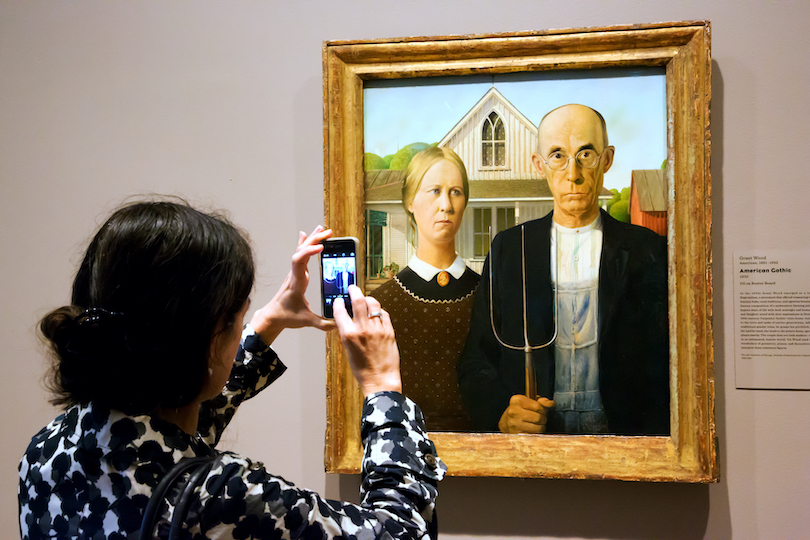 © dreamstime
© dreamstimeNow hanging up in the Art Institute of Chicago, American Gothic is one of the most famous paintings of 20th Century rural Americana. Grant Wood’s defining masterpiece was painted in 1930 and depicts a farmer and his daughter standing in front of what is now known as the American Gothic House.
Initially, locals and art critics took the somber tones and characters’ puritanical clothes as a critique of rural life. The onset of the Great Depression, however, saw the painting become associated with the resoluteness and indomitable spirit of the American pioneers. American Gothic is one of the most important and iconic artworks to come out of the States.
14. The Persistence of Memory (Salvador Dali)
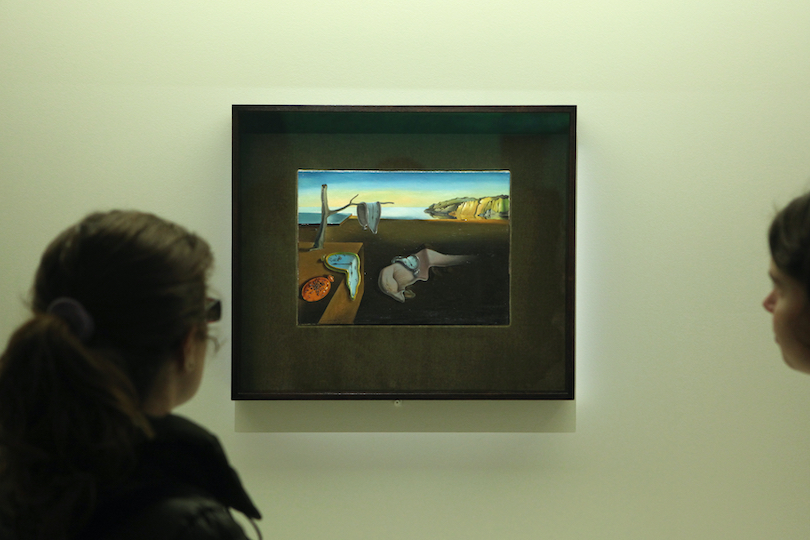 © dreamstime
© dreamstimeOne of the greatest and most distinctive works of Surrealist art of all time, Salvador Dali’s The Persistence of Memory really does stand out from the crowd. In the 1931 painting, we can see melting pocket watches draped across a bleak landscape. The strange scene is widely thought to have been inspired by Albert Einstein’s Theory of Relativity.
One of the most recognizable paintings on Earth, Dali’s fantastic creation can be enjoyed at the Museum of Modern Art in New York.
13. Nighthawks (Edward Hopper)
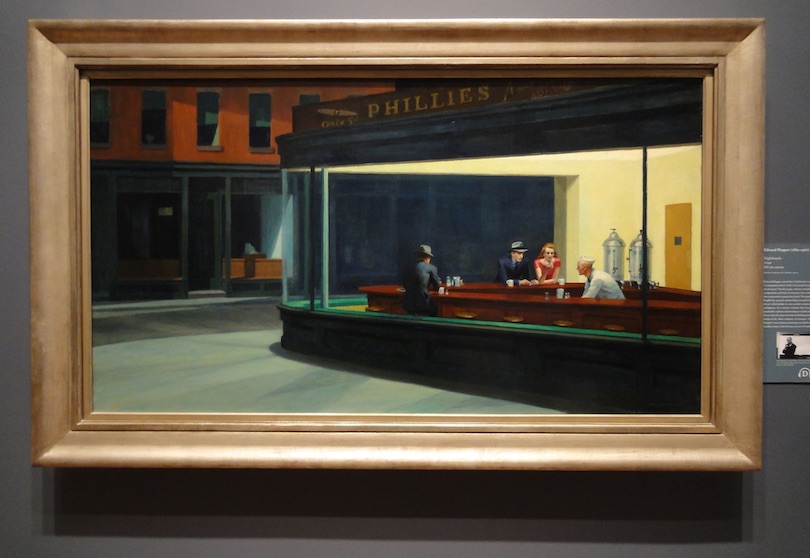 flickr/
flickr/Another of the Art Institute of Chicago’s most famous artworks is Nighthawks, which was painted by Edward Hopper in 1942. In the oil painting, we can see four people in a diner late at night. Light shines out of the brightly lit interior, illuminating the darkness outside through the large glass window.
While many take it to depict loneliness and isolation, Hopper himself said it alluded more to potential predators in the night. One of American Art’s most popular and parodied paintings, Nighthawks is the most renowned and recognizable of Hopper’s artworks.
12. The Great Wave off Kanagawa (Hokusai)
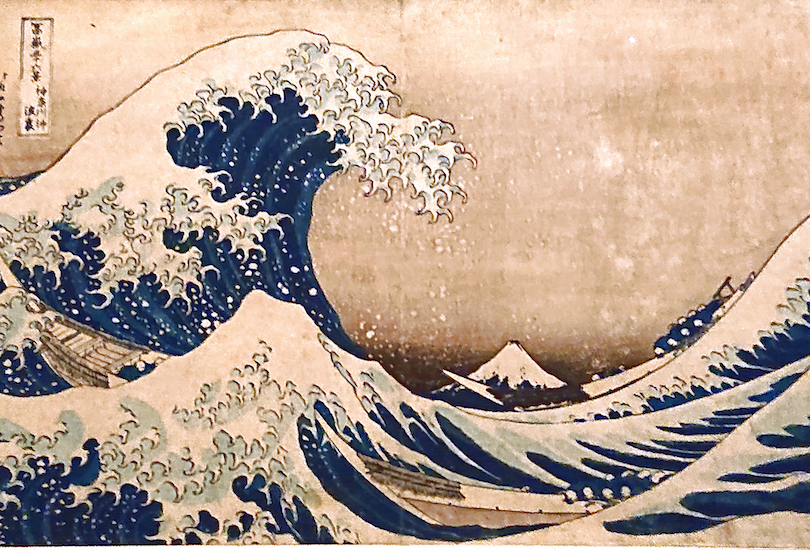 © dreamstime
© dreamstimeThe most famous painting to come out of Japan, The Great Wave off Kanagawa was produced by Hokusai using a woodblock print technique sometime between 1829 and 1833. The stunning scene, with its vivid blues, sees an enormous wave threatening to engulf three fishing boats.
As it was developed as part of the artist’s ‘Thirty-six Views of Mount Fuji’ series, the iconic volcano can be spotted in the background. Due to the fact that numerous prints were made, original impressions of The Great Wave off Kanagawa can be found in the British Museum and the Metropolitan Museum of Art, among others.
11. The Kiss (Gustav Klimt)
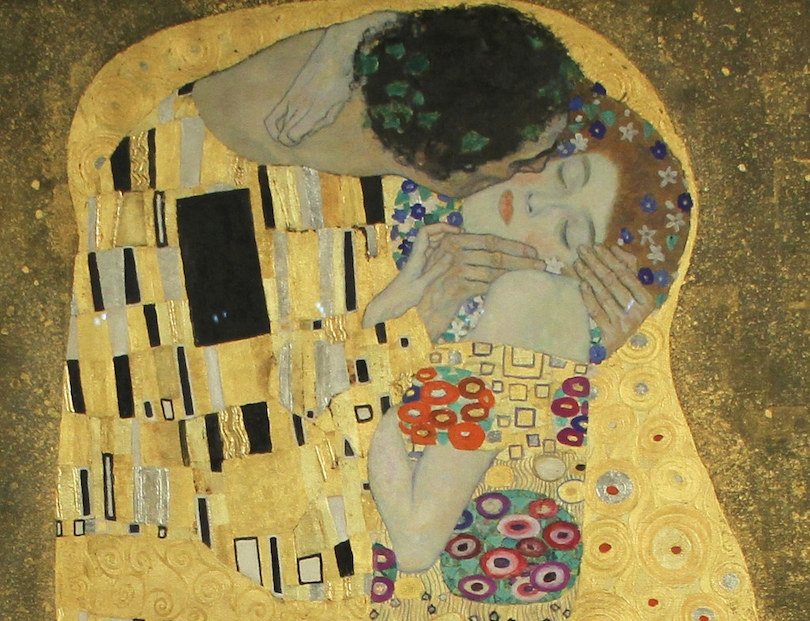 flickr/Tony Hisgett
flickr/Tony HisgettPainted between 1907 and 1908 during the height of Gustav Klimt’s ‘Golden Period,’ The Kiss veritably shimmers and shines before your eyes as gold, silver, and platinum radiate forth from the canvas.
Influenced by both the Arts and Crafts and Art Nouveau movements, the painting depicts two gold-clad lovers entwined in an intimate embrace. Just one of the many highlights of the Belvedere in Vienna’s extensive collection, The Kiss is Klimt’s most popular and enthralling work.
10. Birth of Venus (Botticelli)
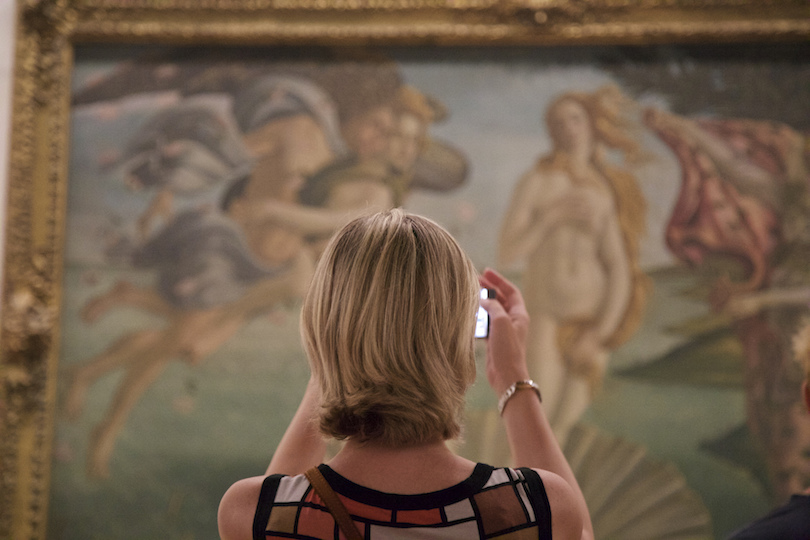 flickr/Nuno Cardoso
flickr/Nuno CardosoOne of the most famous paintings in the world, the Birth of Venus was painted sometime in the 1480s at the height of the Renaissance by Sandro Botticelli. Spellbinding to gaze upon, the masterpiece features a nude Venus, the goddess of love, emerging from a scallop.
As this exquisite mythological figure was the first non-religious nude to be painted since antiquity, the painting had a profound impact on art history. Analyzed and appreciated by countless generations of art historians and laypeople alike, the stupendous painting now resides in the Uffizi Gallery in Florence – the city in which it was painted.
9. Water Lilies (Monet)
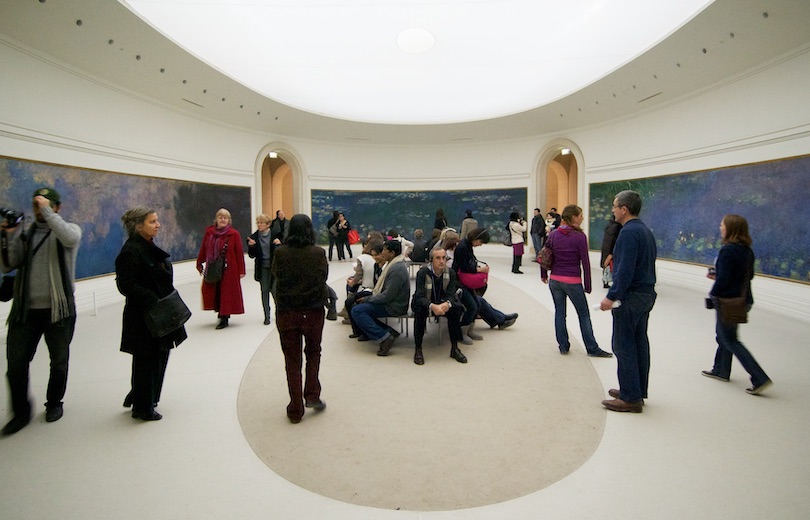 flickr/FHKE
flickr/FHKEConsisting of some 250 different paintings, Claude Monet’s Water Lilies series was painted at his home in Giverny between 1896 and 1926. The main subject of the paintings is the water lily pond in the back of his garden, with various other flowers, a wooden bridge, and a majestic weeping willow also featuring.
One of the great French Impressionists, Claude Monet’s paintings are instantly recognizable and are on display in museums around the world. While the Musee de l’Orangerie is home to eight of his marvelous murals, other Water Lilies artworks can be found in New York’s Museum of Modern Art and the Portland Art Museum, among others.
8. Night Watch (Rembrandt)
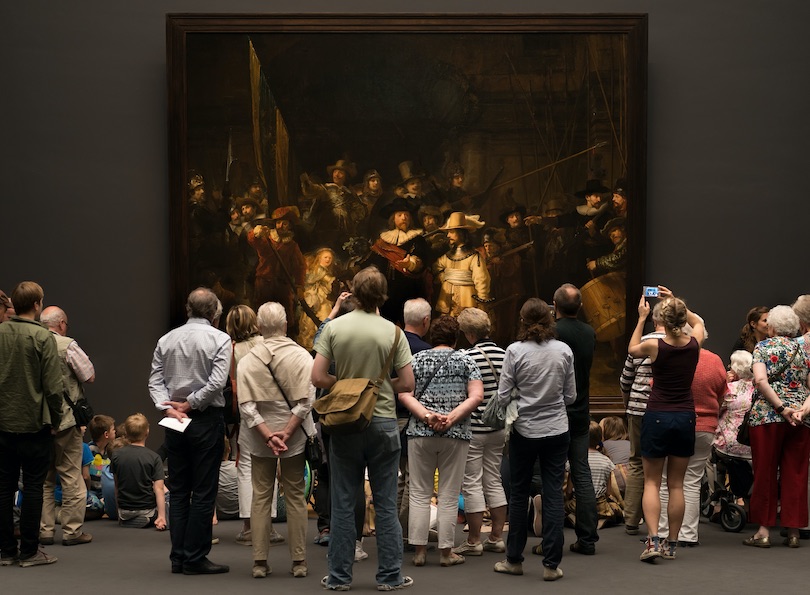 © dreamstime
© dreamstimeArguably the most famous artwork of the Rijkmuseum in Amsterdam, the Night Watch is one of the most magnificent paintings to emerge from the Dutch Golden Age. Painted in 1642 by Rembrandt van Rijn, the enormous canvas portrays a group of civic guards as they head off to practice their shooting. For much of its existence, the painting was coated with a dark varnish which gave the incorrect impression that it depicted a night scene, leading to the name Night Watch.
As well as being noted for its impressive size, the painting is also famed for its dramatic use of light that makes it seem as if the life-size figures are actually moving before us.
7. The Scream (Munch)
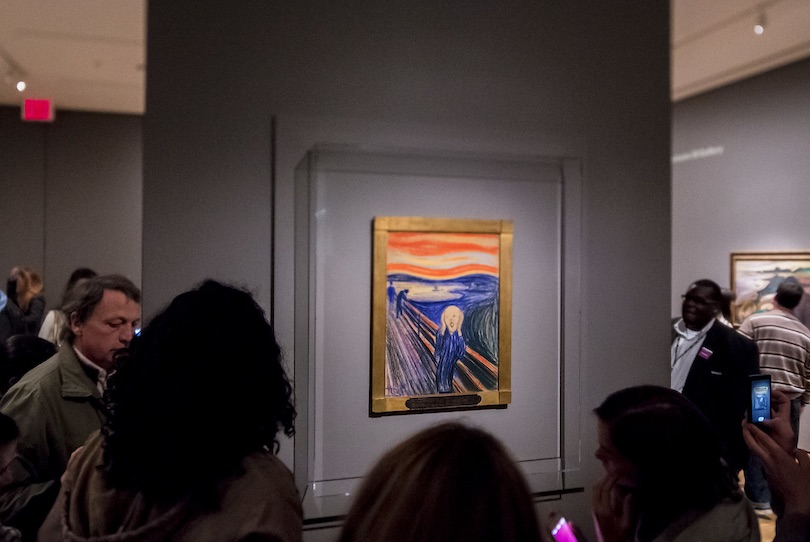 © dreamstime
© dreamstimeThe Scream is a series of expressionist paintings and prints by Norwegian artist Edvard Munch, showing an agonized figure against a blood red sky. The landscape in the background is Oslofjord, viewed from a hill in Oslo. Edvard Munch created several versions of The Scream in various media. The first version was painted in 1893 and is on display in The National Gallery of Norway. It was stolen in 1994 in a high-profile art theft and recovered several months later. In 2004 another version of The Scream was stolen from the Munch Museum, only to be recovered in 2006.
6. Girl with a Pearl Earring (Vermeer)
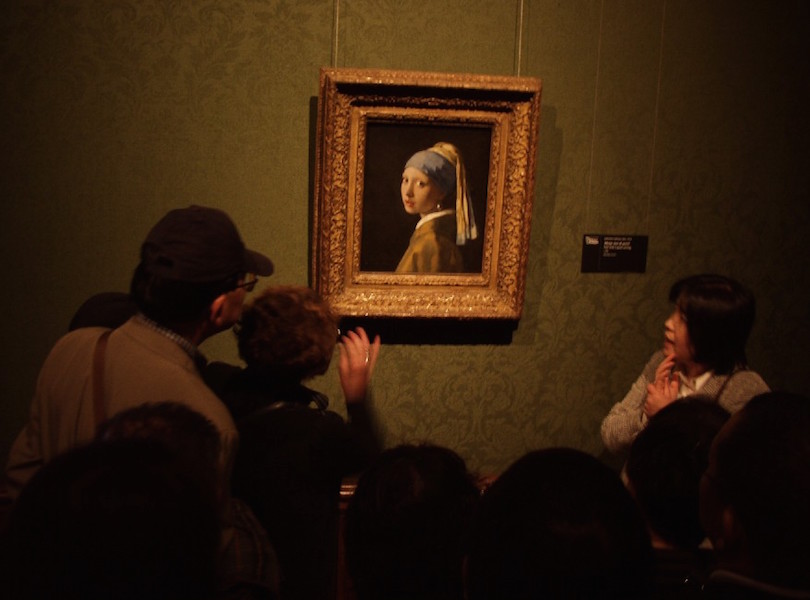 flickr/rogiro
flickr/rogiroAlthough it is often compared with the Mona Lisa, Johannes Vermeer’s Girl with a Pearl Earring is, in fact, a tronie, and not a portrait. Thought to have been painted around 1665 by the Dutch master, the captivating artwork depicts an imagined rather than real girl wearing a blue turban and a sizeable glimmering pearl earring.
Tracy Chevalier wrote a historical novel fictionalizing the circumstances of the painting’s creation. The novel inspired a 2003 film with Scarlett Johansson as Johannes Vermeer’s assistant wearing the pearl earring. Standing out brilliantly against the dark background, the Girl with a Pearl Earring now illuminates the Mauritshuis gallery in which she hangs in The Hague.
5. Guernica (Picasso)
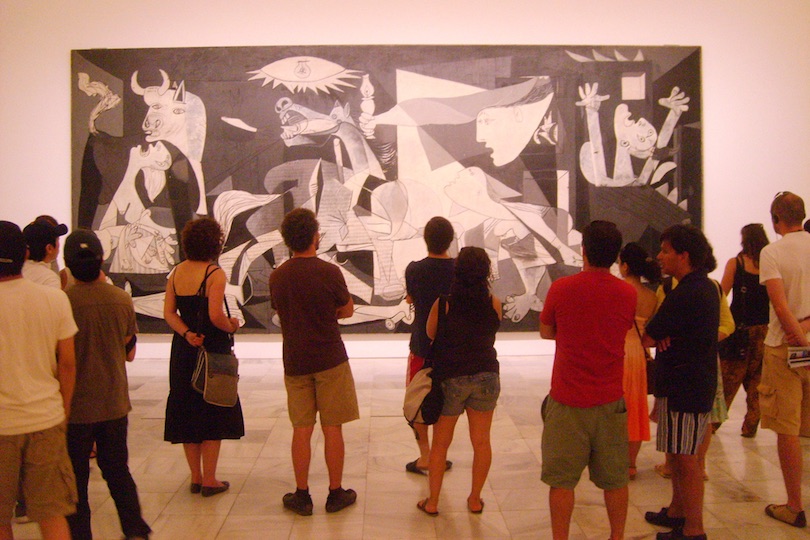 flickr/rogiro
flickr/rogiroOne of Pablo Picasso’s most esteemed and exalted artworks, Guernica tells the sad story of the bombing of the Basque town of the same name. Through a series of black, white, and grey shapes and figures, the famous Cubist highlights the destruction wrought upon the town by Nazi Germany and Fascist Italy.
Painted in 1937, Guernica is widely regarded as one of the greatest and most powerful anti-war artworks of all time. Picasso’s masterpiece can now be enjoyed at the Museo Reina Sofia in Madrid, while a replica tapestry of his famous work can be found hanging at the Headquarters of the United Nations in New York.
4. The Creation of Adam (Michelangelo)
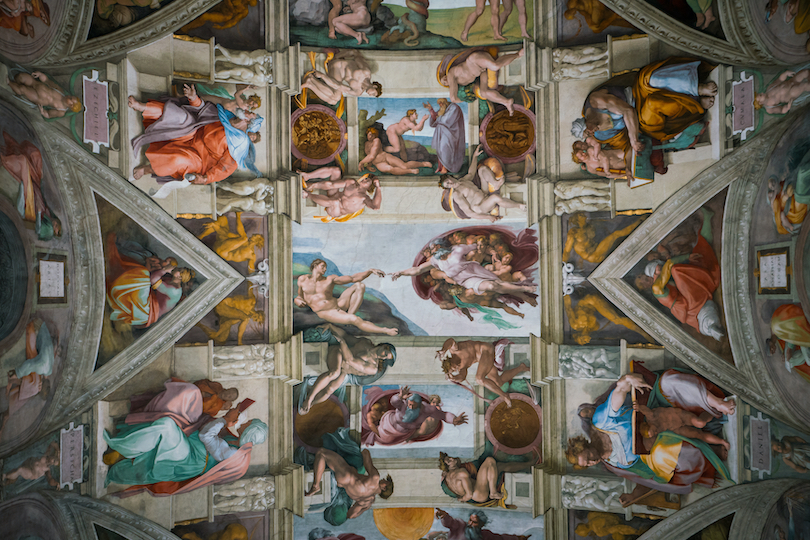 © dreamstime
© dreamstimeMaking up just one small part of the magnificent fresco that covers the Sistine Chapel ceiling, The Creation of Adam is arguably Michelangelo’s most famed and revered work, alongside the statue of David. In the biblical scene, we see God reaching out and stretching to give life to Adam, the first man.
Commissioned by Pope Julius II, the Sistine Chapel ceiling was painted between 1508 and 1512, with The Creation of Adam taking pride of place amongst the central panels. Replicated and reproduced countless times since then, this gorgeous work is just one of the Renaissance man’s many masterpieces.
3. The Last Supper (da Vinci)
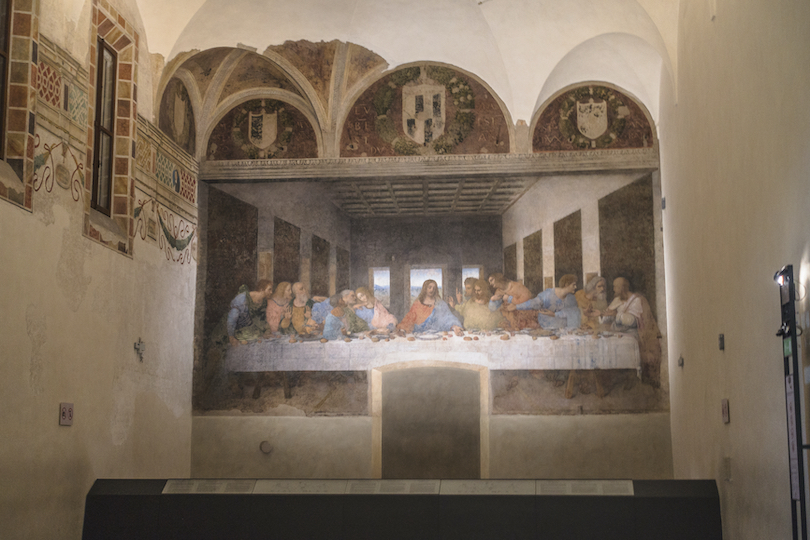 © dreamstime
© dreamstimePainted in the 1490s on a refectory wall in the Convent of Santa Maria delle Grazie in Milan, The Last Supper is one of the most recognizable artworks on Earth. While the years have not been kind to the original, which has sustained much wear and tear, the convent still sees people come from all over the world to catch a glimpse of the fabulous fresco. The marvelous mural depicts the scene when Jesus Christ tells the Twelve Apostles sitting to either side of him that one of them will betray him.
Some writers propose that the person in the painting seated to the left of Jesus is Mary Magdalene rather than John the Apostle. This popular theory plays a central role in Dan Brown’s novel The Da Vinci Code.
2. Starry Night (van Gogh)
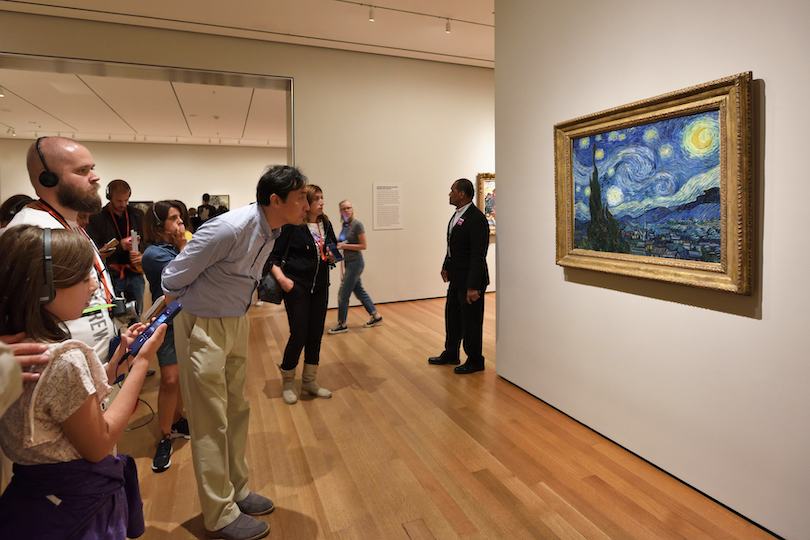 © dreamstime
© dreamstimeVincent van Gogh’s defining work, Starry Night describes the view he could see out of his asylum window in Saint-Rémy-de-Provence after he had a breakdown and cut off part of his own ear in 1888. The iconic scene shows a swirling night sky punctuated with stars overlooking a still sleeping village.
The Dutch post-impressionist painter’s stunning creation is now exhibited at the Museum of Modern Art in New York and is one of the most valued works in their extensive collection.
1. Mona Lisa (da Vinci)
 flickr/Chirag Shah
flickr/Chirag ShahWidely considered to be the most famous painting in the world, the Mona Lisa has delighted onlookers ever since it was painted in the early 1500s by Leonardo da Vinci. The painting is named for Lisa del Giocondo, a member of a wealthy family of Florence. In 1911, the Mona Lisa was stolen by Louvre employee Vincenzo Peruggia, an Italian patriot who believed the Mona Lisa should be returned to Italy. After having kept the painting in his apartment for two years, Peruggia was finally caught when he attempted to sell it to the Uffizi Gallery in Florence. Today, the Mona Lisa hangs again in the Louvre in Paris where 6 million people see the painting each year.
Comments
Post a Comment